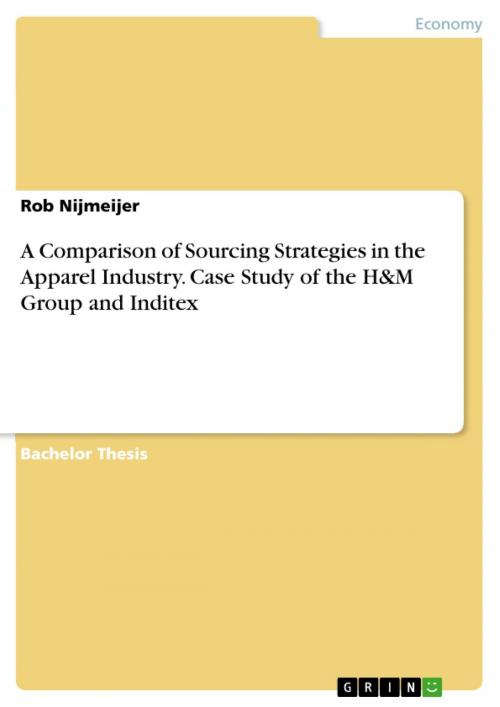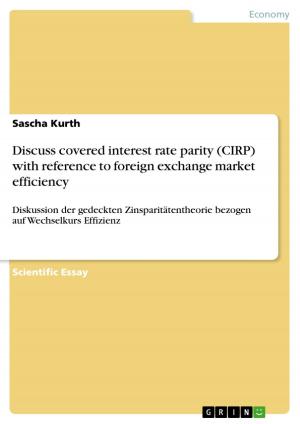A Comparison of Sourcing Strategies in the Apparel Industry. Case Study of the H&M Group and Inditex
Business & Finance| Author: | Rob Nijmeijer | ISBN: | 9783668090934 |
| Publisher: | GRIN Publishing | Publication: | November 20, 2015 |
| Imprint: | GRIN Publishing | Language: | English |
| Author: | Rob Nijmeijer |
| ISBN: | 9783668090934 |
| Publisher: | GRIN Publishing |
| Publication: | November 20, 2015 |
| Imprint: | GRIN Publishing |
| Language: | English |
Bachelor Thesis from the year 2015 in the subject Business economics - Miscellaneous, grade: 9, University of Groningen (Business Economics), course: Bsc International Business, language: English, abstract: In this thesis a comparison is made between the H&M Group and Inditex to measure the differences in overall performance of outsourcing and in-house production in the apparel industry. Outsourcing is often discussed in the literature as the perfect solution to cost reductions however the literature lacks results on the actual performance; this article measures the performance obtained through outsourcing and in-house production. H&M is studied because it has a fully outsourced production, where Inditex mostly produces its products in-house. Performance is measured by the follow variables: costs, agility, asset utilization and product quality. Costs and asset utilization were measured using an independent samples t-test; comparing costs of goods sold salary expenses and overall expenses as a percentage of the revenue, asset utilization is measured by comparing the return on assets ratio. Agility is studied by an in-depth analysis and product quality based on a survey on consumer perception. The results show that H&M has significantly reduced its costs by outsourcing, while Inditex with higher costs is able to keep a very short lead-time. H&M has been successful in increasing return on assets and product quality is perceived equal for both companies. This article contributes to the field of research by showing that outsourcing does lead to cost reduction, however in-house production leads to better performance in agility.
Bachelor Thesis from the year 2015 in the subject Business economics - Miscellaneous, grade: 9, University of Groningen (Business Economics), course: Bsc International Business, language: English, abstract: In this thesis a comparison is made between the H&M Group and Inditex to measure the differences in overall performance of outsourcing and in-house production in the apparel industry. Outsourcing is often discussed in the literature as the perfect solution to cost reductions however the literature lacks results on the actual performance; this article measures the performance obtained through outsourcing and in-house production. H&M is studied because it has a fully outsourced production, where Inditex mostly produces its products in-house. Performance is measured by the follow variables: costs, agility, asset utilization and product quality. Costs and asset utilization were measured using an independent samples t-test; comparing costs of goods sold salary expenses and overall expenses as a percentage of the revenue, asset utilization is measured by comparing the return on assets ratio. Agility is studied by an in-depth analysis and product quality based on a survey on consumer perception. The results show that H&M has significantly reduced its costs by outsourcing, while Inditex with higher costs is able to keep a very short lead-time. H&M has been successful in increasing return on assets and product quality is perceived equal for both companies. This article contributes to the field of research by showing that outsourcing does lead to cost reduction, however in-house production leads to better performance in agility.















